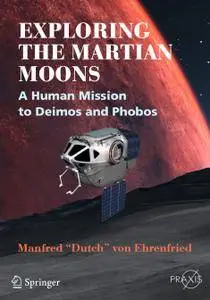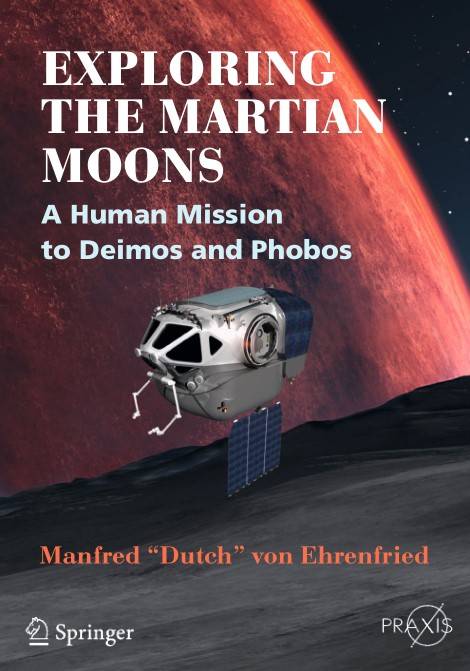Exploring the Martian Moons: A Human Mission to Deimos and Phobos By Manfred “Dutch” von Ehrenfried
English | PDF | 2017 | 271 Pages | ISBN : 3319526995 | 16.88 MB
This book explores the once popular idea of 'Flexible Path' in terms of Mars, a strategy that would focus on a manned orbital mission to Mars's moons rather than the more risky, expensive and time-consuming trip to land humans on the Martian surface. While currently still not the most popular idea, this mission would take advantage of the operational, scientific and engineering lessons to be learned from going to Mars's moons first. Unlike a trip to the planet's surface, an orbital mission avoids the dangers of the deep gravity well of Mars and a very long stay on the surface. This is analogous to Apollo 8 and 10, which preceded the landing on the Moon of Apollo 11. Furthermore, a Mars orbital mission could be achieved at least five years, possibly 10 before a landing mission. Nor would an orbital mission require all of the extra vehicles, equipment and supplies needed for a landing and a stay on the planet for over a year. The cost difference between the two types of missions is in the order of tens of billions of dollars.
An orbital mission to Deimos and Phobos would provide an early opportunity to acquire scientific knowledge of the moons and Mars as well, since some of the regolith is presumed to be soil ejected from Mars. It may also offer the opportunity to deploy scientific instruments on the moons which would aid subsequent missions. It would provide early operational experience in the Mars environment without the risk of a landing. The author convincingly argues this experience would enhance the probability of a safe and successful Mars landing by NASA at a later date, and lays out the best way to approach an orbital mission in great detail. Combining path-breaking science with achievable goals on a fast timetable, this approach is the best of both worlds–and our best path to reaching Mars safely in the future.



